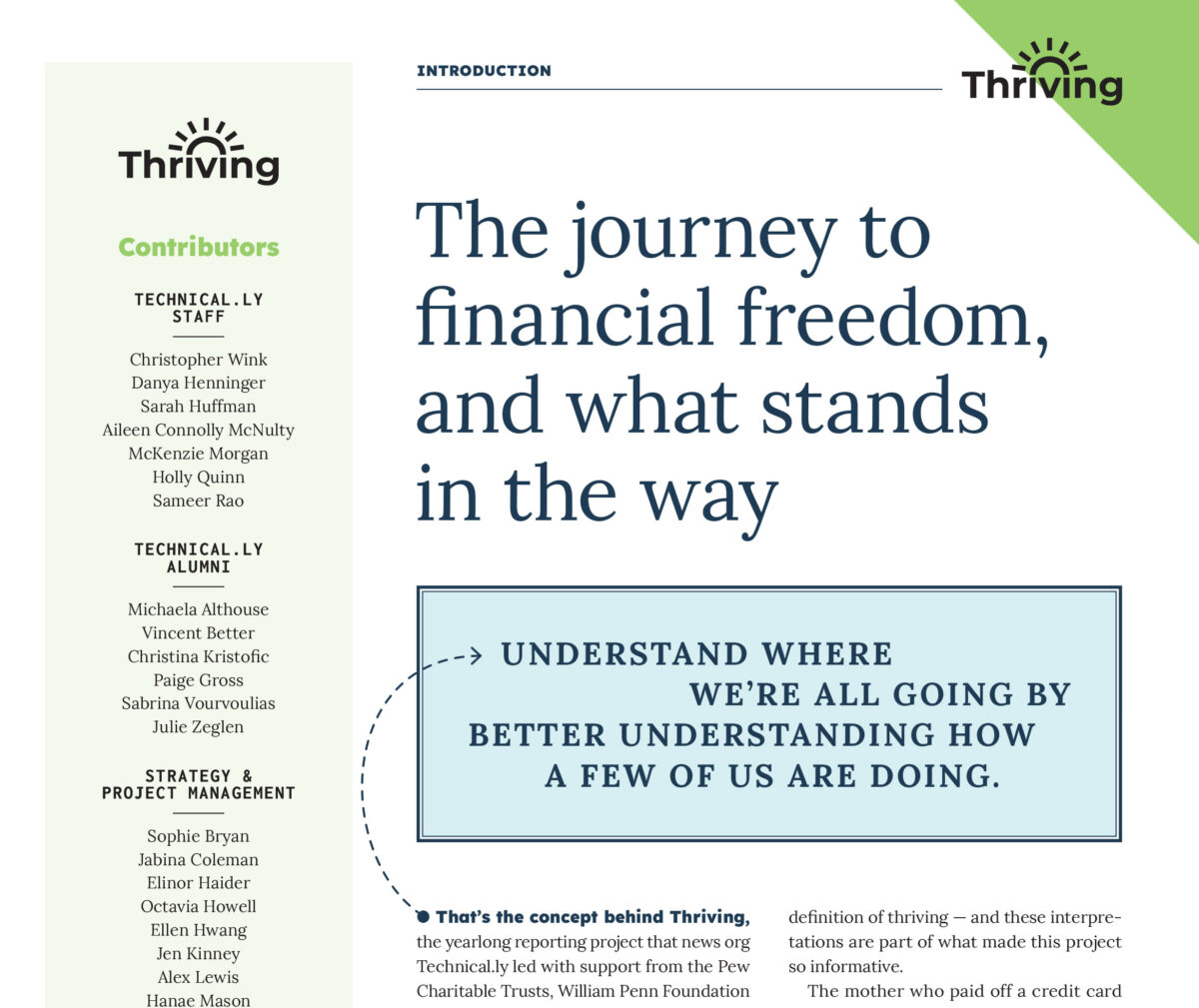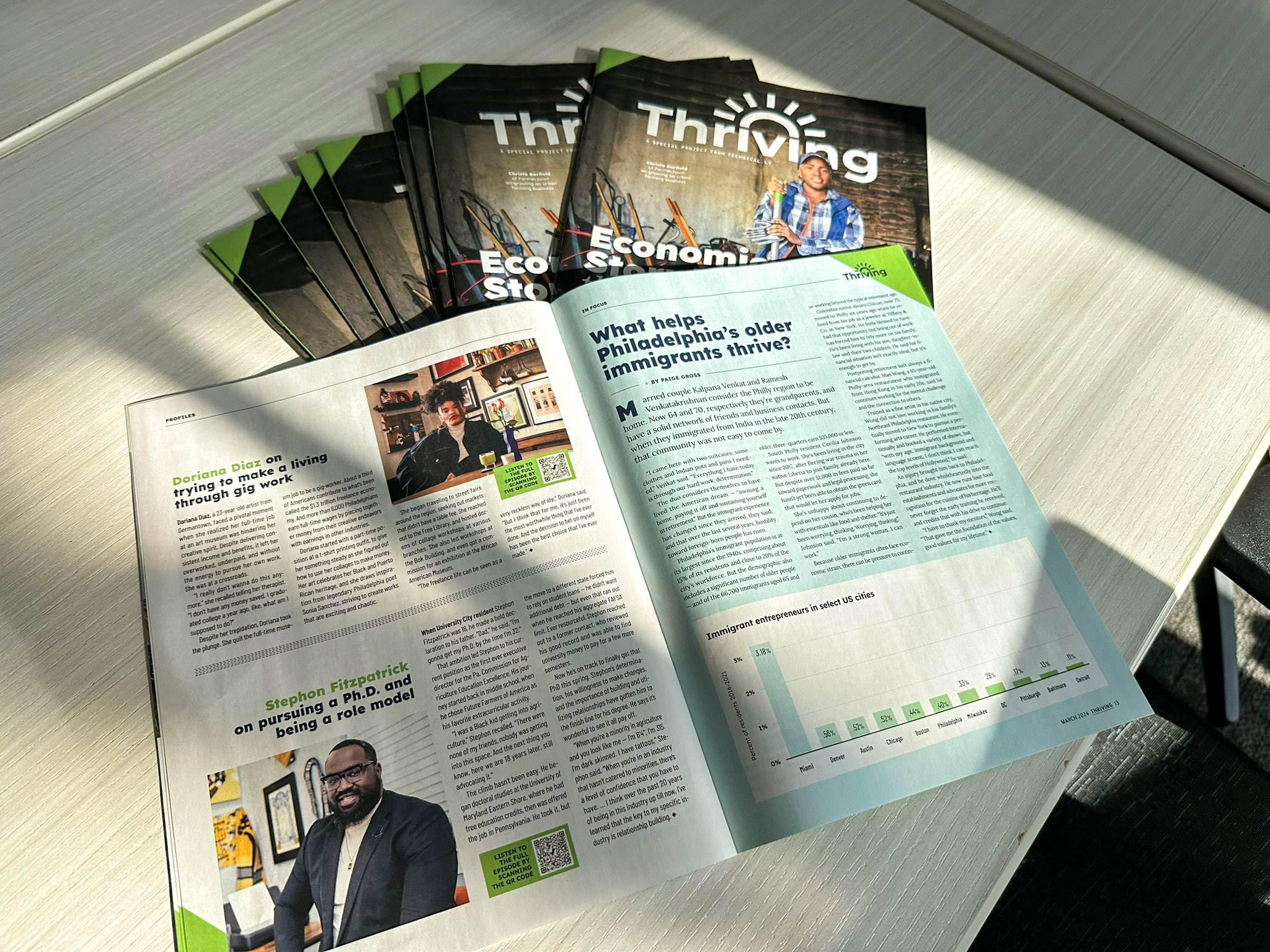Long live print. That might sound weird from a news org that’s been publishing online its whole 15 years of existence. But it’s not just a philosophy of convenience.
It’s true, Technical.ly has an actual mini magazine out this month.
Like, bury-your-nose-in-the-pages-to-sniff-the-ink actual. Find a copy of sustainability mag Grid around Philadelphia, and it’ll be right there in the middle, starting on page 18.
Titled “Thriving,” it’s a digest of the year and a half of reporting we did around economic mobility — a compilation of findings and stories from interviews with more than 500 people at varying stages of their lives and careers.
Flip through the print magazine here
We did a lot of condensing to fit more than 50 online articles into just over a dozen print pages. But length isn’t the only reason the magazine is so accessible.
Print offers things digital publishing does not.
First, the information is presented differently. The colorful, thoughtful layout by Jamie Leary (whose work you may recognize from Philly Mag), under the direction of Grid publisher Alex Mulcahy, draws the eye to things you might easily have skipped over when reading online.
Unlike the two-dimensional scroll of a web story, when something is in print, you can jump around all over the page. It offers a more personalized way of assimilating the information, in the order that makes most sense to you.
It’s not that one is better, but there are tradeoffs. Think of virtual vs. in-person meetings. Setting up a Zoom is often more convenient and less time-consuming — so you might meet people you’d never be able to otherwise. But that screen of face-boxes lacks the marginalia of IRL: the side conversations, the glances, the chuckles, the winks, the eye-rolls.

No doubt the print news industry is shrinking. Over the next five years in the US, revenue is predicted to contract by about 3% annually, according to analytics website Statista. It’ll still be a nearly $22 billion sector in 2029 — about half what it was at the start of the 2010s.
On the other hand, magazine readership has increased over the past decade, per industry group News Media Alliance. Last year, three-quarters of US adults said they’d read a print magazine within the past 6 months, and people under the age of 45 are most likely to be doing that reading, according to the Association of Magazine Media. Across the nation, more than 70 new print magazines launched last year. Even gen AI imaging company Midjourney has one.
There’s another major thing print offers: It’s easily passed around from person to person.
A publisher at Metro Philadelphia, the tabloid weekday newspaper that’s freely available at SEPTA stations and elsewhere around the city, once estimated each copy of the paper passed through the hands of at least 5 or 6 people.
One of our goals with Thriving, which was supported by the Pew Charitable Trusts, William Penn Foundation and the Knight Foundation, has been to deliver the outcome of our research and reporting back to the people who contributed their stories. Technical.ly writes for the communities we cover, not just about them.
And we know not everyone we connected with for Thriving is reading our website, or even regularly accessing news on the web at all.
The entrepreneurs or working moms we spoke with might not have time. The older residents might not be familiar with how. The gig-working creatives might not bother. But if we drop off a print magazine, they’ll probably flip through it. So we ordered a bunch of standalone copies of the mini mag to distribute directly to our sources.
If you are online — and yes, hello, you are — the “Thriving” mini mag is available to flip through in one of those digital facsimiles of a print product.
Or pick up a copy of Grid, or stop by our offices at the Curtis Building in Center City to hold and touch and sniff it in all its physical glory. Long live online publishing. Long live print.

